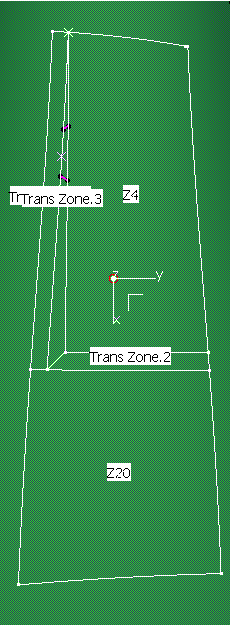About ITP Height | ||||
|
| |||
This value represents the height of the solid at the specified point. As a consequence:
- You can impose ITP Height wherever you want to.
- The stack no longer needs to be an exact multiple of plies thickness.
- It supports multimaterial scenarios.
The example below shows you when an ITP or an ITP Height is required. In this example:
- The black tip means that no ITP is required.
- The red cross means that an ITP is required.
The number of plies is defined by the adjacent
zones. No ITP is required:
- The blue and red blocks are zones. The green block is a transition zone.
The number of plies is undefined. An ITP is required. In this case, the stack is an exact
multiple of plies thickness. The ITP can be an integer: 
- The blue and red blocks are zones, the green and yellow blocks are transition zones.
The number of plies is undefined. An ITP is required. In this case, the stack is not an exact
multiple of plies thickness. The ITP cannot be an integer. An ITP Height is required:
- The blue and red blocks are zones, the green and yellow blocks are transition zones.
For this scenario, we have created the solid in the previous task from this preliminary design:
- Zx being a zone
- Trans Zone.x being a transition zone.

If we change the zones and transitions zones as shown:
with this detail:
ITP Height are required at the points shown: